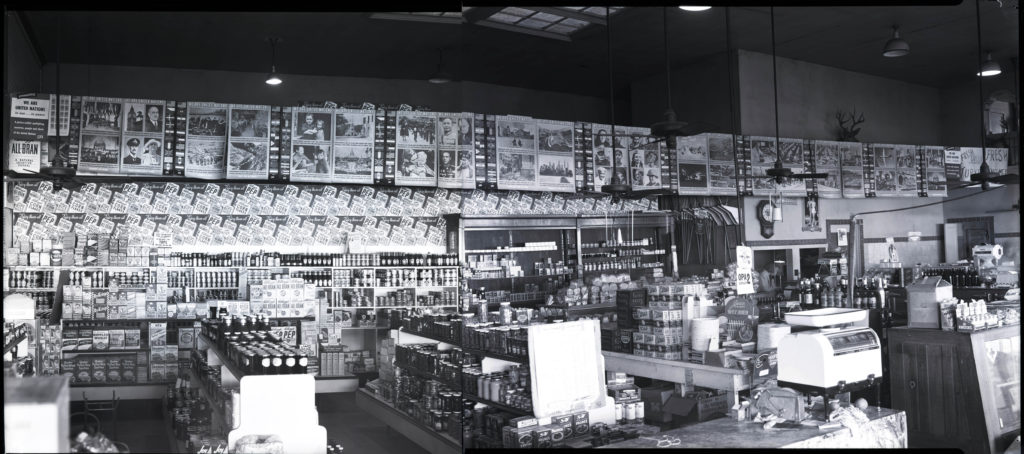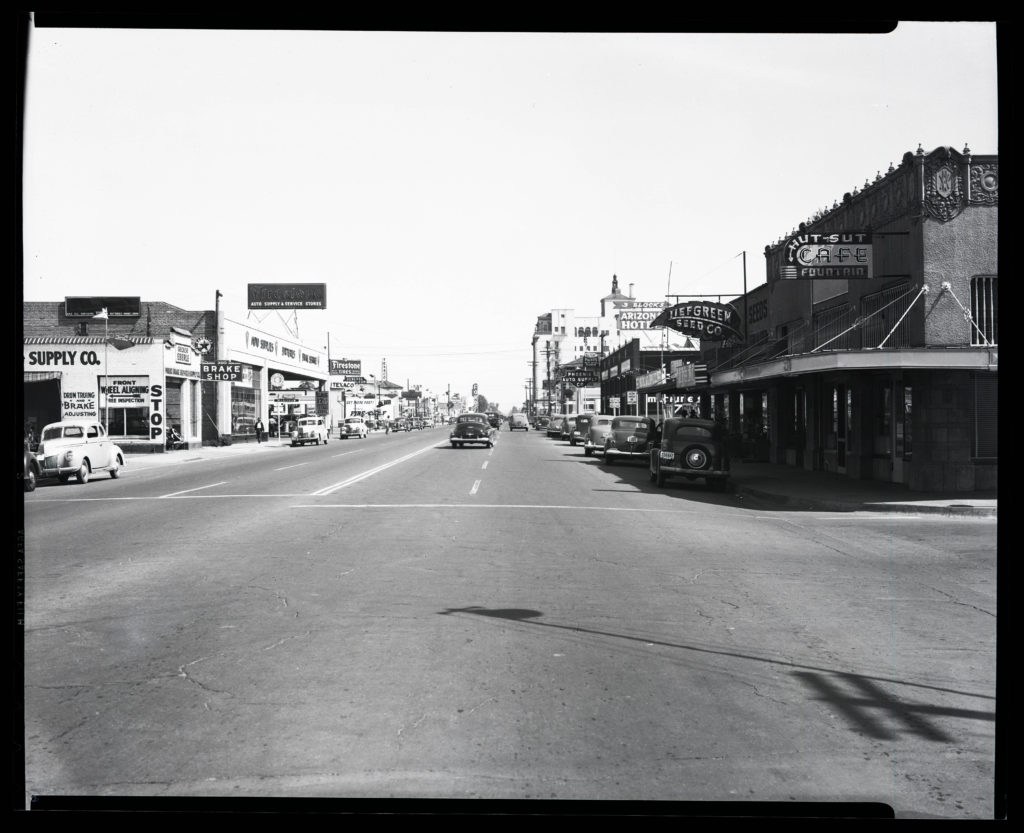Historic Groceries
Donna Reiner, a local historian and a good friend of Get Your PHX, has written many articles over the years for the Arizona Republic and others about what came before us. We use her services when we list properties of historic significance to help us tell the stories behind the homes.
We are happy that Donna is allowing us to re-publish some of her articles on a monthly basis. If you or your business ever needs a historian, let Donna know at laydeescholar@hotmail.com.
———————–
 The media and residents are all atwitter as a grocery store is coming to downtown Phoenix. The food desert will be no more. But did you know that there was once a plethora of stores in downtown that were able to supply all the food and other household supplies needed by Phoenicians?
The media and residents are all atwitter as a grocery store is coming to downtown Phoenix. The food desert will be no more. But did you know that there was once a plethora of stores in downtown that were able to supply all the food and other household supplies needed by Phoenicians?
A grocery store was a place to socialize for the community and this was particularly so for the housewife. Thus, it should not be surprising that the number of grocery stores per capita was quite high. Granted, many of these stores specialized in just meats, baked goods, fish and poultry, vegetables or fruit. Buyers walked from shop to shop often along the same street purchasing items they would need for the next few days as electric refrigerators were not a common item in many kitchens.
When the Grand Central Market opened on the Southeast corner of Monroe and 1st Avenue (now the site of US Bank) in 1921, this became a shopper’s paradise. Over 25 retailers under one roof! Much like the Phoenix Public Market today, although it’s outdoors, the shopper would browse the wares of different vendors, get to know them, and select items for purchase. This market was heralded as a modern convenience and would also cater to the automobile patrons with easy parking on both Monroe and First Avenue.
 The wave of the “futuristic” groceries continued in Phoenix with the opening of the Welnick Arcade Market on the Southeast corner of Van Buren and 4th Avenue in 1927. Although smaller than the Central Market in square footage, the Welnick Market made up for it in other ways. The headline in the Arizona Republican proclaimed, “Latest System Installed for Busy Shoppers.” For example, Hubbell’s self-service grocery section instituted a new way to find items. His numbering system for items plus signs to direct customers to the right section of his store shortened the time one needed to shop. And other “scientific handling of the merchandise to save time, effort and cost…to the customer” were part of what the shopper noticed. Nevertheless, these modernizations probably reduced the amount of socializing that once took place while standing in line waiting for your meat or fish order to be cut and wrapped. But less time at the market allowed for more time to do other things.
The wave of the “futuristic” groceries continued in Phoenix with the opening of the Welnick Arcade Market on the Southeast corner of Van Buren and 4th Avenue in 1927. Although smaller than the Central Market in square footage, the Welnick Market made up for it in other ways. The headline in the Arizona Republican proclaimed, “Latest System Installed for Busy Shoppers.” For example, Hubbell’s self-service grocery section instituted a new way to find items. His numbering system for items plus signs to direct customers to the right section of his store shortened the time one needed to shop. And other “scientific handling of the merchandise to save time, effort and cost…to the customer” were part of what the shopper noticed. Nevertheless, these modernizations probably reduced the amount of socializing that once took place while standing in line waiting for your meat or fish order to be cut and wrapped. But less time at the market allowed for more time to do other things.
Considering how chain groceries are designed today, it’s remarkable that not that much has changed from the layouts of these two early one-stop shopping markets in Phoenix.

